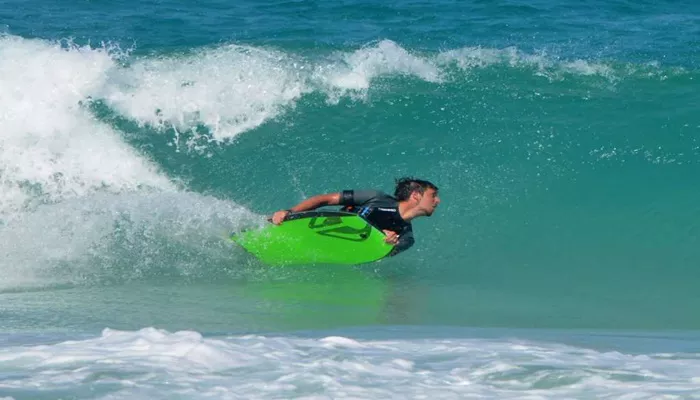Turning while paddling is a fundamental skill in surfing that allows surfers to position themselves correctly to catch waves, navigate through the lineup, and maneuver efficiently in the water. Mastering paddling turns is essential for surfers of all levels, as it improves board control and helps maintain momentum. Whether you’re preparing to catch an incoming wave or adjusting your direction to avoid obstacles, understanding how to execute precise turns will enhance your overall surfing experience. This article provides a comprehensive guide on the techniques for turning while surf paddling, including key principles, body mechanics, and tips for improving efficiency.
1. Understanding the Basics of Paddling Turns
Importance of Efficient Turning
Efficient turning while paddling allows surfers to quickly position themselves in the right spot to catch waves. It also helps in maintaining speed and flow, reducing unnecessary energy expenditure, and avoiding collisions with other surfers or obstacles.
Types of Paddling Turns
There are two main techniques for turning while paddling:
Sweep Stroke Turn – A broad, arcing stroke used to gradually change direction.
Pivot Turn – A sharper turn that involves shifting weight and using the arms strategically.
Each technique is useful in different situations, and mastering both will improve a surfer’s overall paddling efficiency.
2. Sweep Stroke Turn Technique
Body Positioning
To perform a sweep stroke turn effectively, it’s crucial to maintain proper body alignment. Position yourself in the center of the board with a balanced posture to prevent unnecessary drag.
Paddle Stroke Execution
Extend the Arm – Reach forward with one arm on the side you want to turn toward.
Wide Stroke – Sweep your arm in a broad arc away from the board while keeping the opposite arm relaxed.
Maintain Flow – Continue the sweeping motion while keeping a steady, rhythmic paddling movement.
This technique allows for gradual turning and is most effective when making slight directional changes while paddling out or positioning for a wave.
3. Pivot Turn Technique
Shifting Body Weight
The pivot turn involves a more aggressive shift in direction and is useful for making quick adjustments. It requires engaging the core and lower body while paddling.
Steps to Execute a Pivot Turn
Move Back on the Board – Shift your weight slightly toward the tail to lift the nose of the board.
Use a Strong Paddle Stroke – On the side opposite of your intended turn direction, perform a deep and powerful paddle stroke.
Engage the Core and Legs – Tighten your core muscles and subtly use your legs to maintain balance.
Adjust and Resume Paddling – Once you’ve turned in the desired direction, return to a neutral paddling position and continue forward.
This technique is particularly useful when quickly repositioning to catch a wave or avoiding obstacles.
4. Key Factors for Improving Paddling Turns
Upper Body Strength and Endurance
Building upper body strength, particularly in the shoulders, back, and arms, will enhance your paddling efficiency. Exercises such as push-ups, pull-ups, and resistance training can help develop the necessary muscles.
Core Stability and Engagement
A strong core is essential for balance and control while executing turns. Incorporate exercises like planks, Russian twists, and leg raises into your training routine.
Board Control and Positioning
Understanding how your board responds to weight shifts and paddle strokes will allow for more controlled and precise turns. Practicing different turning techniques in various wave conditions will improve your adaptability.
5. Common Mistakes and How to Avoid Them
Over-Paddling
Excessive paddling can lead to inefficient movements and unnecessary fatigue. Focus on controlled, purposeful strokes instead of rapid, shallow paddling.
Poor Weight Distribution
Failing to shift weight correctly can cause the board to remain unresponsive. Ensure proper weight placement according to the turning technique being used.
Lack of Timing and Coordination
Turning too late or too early can result in missing a wave or losing balance. Develop a sense of timing by practicing in different surf conditions.
6. Drills to Improve Paddling Turns
Flat Water Practice
Before heading into the waves, practice sweep stroke and pivot turns in calm water to refine technique and build muscle memory.
Interval Training
Alternate between paddling straight and making controlled turns to build endurance and improve transition speed.
Simulation Exercises
Perform land-based drills using a balance board or stability ball to simulate the shifting weight mechanics needed for turning.
Conclusion
Turning while surf paddling is a crucial skill that enhances maneuverability, efficiency, and wave-catching ability. By mastering techniques such as the sweep stroke turnand pivot turn, surfers can navigate waves with greater precision and confidence. Improving strength, balance, and paddling coordination will further refine these skills, making each surf session more effective and enjoyable. Whether you’re a beginner learning the fundamentals or an experienced surfer looking to fine-tune your technique, consistent practice and attention to detail will lead to noticeable improvements in your surfing performance.

